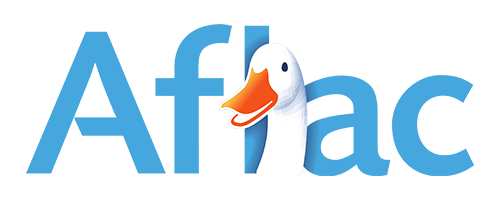Catastrophic Health Insurance Over 50: Eligibility & Costs
Catastrophic Health Insurance Over 50: How to Find Affordable Coverage and Understand Eligibility

Catastrophic health insurance protects adults under 65 from severe financial exposure after major medical events, and understanding how it works is especially important for people aged 50–64 who are pre–Medicare. This guide explains what catastrophic plans cover, who can qualify, how they compare with Bronze and Silver ACA marketplace tiers, and what financial tradeoffs matter for early retirees and the self–employed. You will learn eligibility rules (including hardship exemptions), the 2025 and 2026 deductible context, how HDHPs and HSAs interact with catastrophic options, and practical steps for shopping on the Colorado marketplace. The article maps the decision process from basic plan mechanics and preventive–care coverage to cost scenarios and state–specific enrollment tactics. Read on for clear comparisons, tables that summarize key attributes, and checklists that help prioritize choices for adults over 50.
What Is Catastrophic Health Insurance and How Does It Work for Adults Over 50?
Catastrophic health insurance is a type of individual market coverage designed to provide low monthly premiums and protection from very large medical bills by applying very high deductibles before most benefits pay. The plan mechanism centers on a tradeoff: lower premium payments each month in exchange for assuming more upfront cost until a high deductible is met, at which point the plan protects against catastrophic out–of–pocket expenses up to the plan’s maximum. For adults ages 50–64 this structure can make sense when routine care needs are low but financial protection against emergencies remains important. The following subsections break down key features, how catastrophic coverage activates during major events, and which preventive services remain covered without cost–sharing, then move into eligibility and marketplace comparisons.
What Are the Key Features of Catastrophic Health Plans for Ages 50–64?

Catastrophic plans typically offer low monthly premiums, very high individual deductibles, and coverage for essential health benefits after the deductible is met, with preventive services exempted from deductible rules. For adults 50–64, the low premium helps manage monthly cash flow, but the high deductible increases short–term financial risk if hospitalization or surgery is required. Provider networks and prescription drug coverage vary by carrier, so network access and formulary design are crucial considerations when evaluating real cost exposure beyond premiums. Understanding these tradeoffs leads directly to assessing how catastrophic coverage functions during large medical events and why out–of–pocket maximums matter.
How Does Catastrophic Coverage Protect Against Major Medical Events?
Catastrophic coverage protects by capping an enrollee’s financial exposure after the insured reaches the plan deductible: once the deductible and any applicable coinsurance are paid, the insurer covers the remainder up to the out–of–pocket maximum. For example, an emergency surgery that generates costs far above the deductible is where catastrophic plans deliver value—without this protection, a single event could be financially devastating. The out–of–pocket maximum limits cumulative annual spending, providing peace of mind for unexpected high–cost care. This protection model raises the next question: what preventive services are still available without meeting the deductible?
What Preventive Care Is Covered Under Catastrophic Plans for Older Adults?
Under marketplace rules, most preventive services required by the Affordable Care Act are covered without cost–sharing even if the enrollee has not met the deductible, which benefits adults 50–64 who need age–specific screenings. Covered preventive care commonly includes cancer screenings, immunizations, and recommended chronic–disease screenings that help detect conditions earlier and reduce downstream costs. For older adults, screenings such as colorectal and breast cancer checks, blood pressure monitoring, and certain vaccinations are particularly relevant. Knowing which preventive services are exempt from the deductible helps older adults maintain routine care while preserving catastrophic protection for major events.
Who Is Eligible for Catastrophic Health Insurance Over 50?
The basic ACA rule limits automatic eligibility for catastrophic plans to adults under 30, but marketplace hardship and affordability exemptions create pathways for older adults to enroll if they qualify. Eligibility hinges on age rules, documented hardship circumstances, or special exemption criteria that the marketplace recognizes. For many individuals aged 50–64, demonstrating a hardship or qualifying life event is the practical route to enroll in a catastrophic plan; understanding how these exemptions are defined and documented is essential. The next three subsections explain whether 50–64 year–olds can enroll without exemptions, define hardship categories, and summarize how 2026 policy changes affect eligibility.
Can Individuals Aged 50–64 Qualify for Catastrophic Plans Without Hardship Exemptions?
Typically, individuals aged 50–64 cannot enroll in catastrophic plans unless they meet a specific exemption; the automatic age–based window is under age 30. That said, certain adults in the 50–64 range can qualify through hardship or affordability exemptions that the marketplace recognizes, such as major financial disruption or recent loss of coverage. Eligibility without exemption is rare, so most older applicants should prepare documentation or consult marketplace guidance to determine whether an exemption applies. Knowing this limitation leads into the specifics of what counts as a hardship and how to apply.
What Are Hardship and Affordability Exemptions for Catastrophic Plans?
Hardship exemptions are marketplace–level permissions that allow a consumer to enroll in plans normally limited by age; qualifying events often include natural disasters, significant income loss, homelessness, or other severe disruptions that impair the ability to obtain standard coverage. Affordability exemptions focus on demonstrated inability to secure affordable employer coverage or marketplace options due to unusual circumstances. To pursue an exemption, applicants typically submit evidence or an attestation through the marketplace process, and timely documentation improves the chances of approval. Understanding these exemptions guides older adults toward practical enrollment steps and triggers the question of broader 2026 changes.
How Will 2026 ACA Changes Affect Eligibility for Catastrophic Plans Over 50?
Policy changes effective in 2026 change how some plan categories interact with HSAs and HSA eligibility, which indirectly affects decision–making for older adults weighing catastrophic options. While age–based eligibility rules for catastrophic plans remain similar, the 2026 updates that expand HSA compatibility to include certain Bronze and catastrophic plan designs change the value proposition for pre–Medicare adults. These policy shifts make it more important for adults 50–64 to reexamine plan pairings and savings strategies before open enrollment. Preparing for these changes means reviewing plan details and possible exemption options well ahead of enrollment windows.
How Do Catastrophic Plans Compare to Other ACA Metal Tiers for Ages 50–64?
Comparing catastrophic, Bronze, and Silver tiers shows clear tradeoffs in premiums, deductibles, out–of–pocket exposure, and subsidy eligibility that matter for adults 50–64 choosing coverage. Catastrophic plans favor lower premiums and higher deductibles, Bronze plans balance moderate premiums with high cost–sharing, and Silver plans typically offer higher premiums with lower deductibles and access to cost–sharing reductions for eligible enrollees. The table below summarizes these differences to help older adults weigh which tier aligns with their risk tolerance and expected utilization.
Different metal tiers offer distinct cost–sharing profiles and subsidy access that shape annual financial outcomes for pre–Medicare adults.
| Plan Tier | Typical Premium Level | Typical Deductible / OOP Profile | Subsidy Eligibility |
|---|---|---|---|
| Catastrophic | Low monthly premium | Very high deductible; protects vs major events | Limited; often age/exemption constrained |
| Bronze | Lower–than–average premium | High deductible, moderate OOP max | Eligible for premium tax credits; not CSR–optimized |
| Silver | Moderate–to–higher premium | Lower deductible, lower OOP max | Eligible for premium tax credits and CSRs if income qualifies |
What Are the Differences Between Catastrophic, Bronze, and Silver Plans for Older Adults?
The core differences involve where costs fall: catastrophic shifts costs to the enrollee until a high deductible is met, Bronze spreads costs between premiums and larger deductibles, and Silver reduces out–of–pocket risk at the cost of higher premiums. For someone ages 50–64 who expects minimal routine care, catastrophic or Bronze can lower monthly spending, but unexpected hospitalization could make Silver more cost–effective in a bad–luck year. Subsidy eligibility further changes calculations because premium tax credits and cost–sharing reductions (CSRs) typically make Silver plans comparatively more affordable for lower– and middle–income households. Assessing these elements clarifies when to favor one tier over another.
How Do Out–of–Pocket Costs Vary Among These Plans for Seniors Under 65?
Annual out–of–pocket costs are the sum of premiums plus expected cost–sharing for typical care; catastrophic plans lower premium spending but increase expected OOP if you need care before the deductible. Practical estimation uses scenario modeling: calculate annual premiums, add expected routine visits and prescriptions, then add catastrophic event exposure probability. For many adults 50–64, prescription needs and chronic conditions push the optimal choice away from catastrophic because routine expenses accumulate toward the deductible. Recognizing typical utilization patterns helps determine whether the premium savings outweigh higher potential out–of–pocket costs.
Which Plan Types Are Best Suited for Early Retirees and Self–Employed Over 50?
Early retirees with stable retirement income but limited access to employer contributions often benefit from Bronze or Silver plans that balance premiums and protection, while some self–employed individuals prefer HDHP options paired with HSAs to gain tax advantages and control over healthcare spending. The best plan depends on predictable routine needs, income volatility, and whether HSA savings are a strategic priority. For many in Colorado, marketplace comparisons and scenario modeling reveal whether premium savings or lower catastrophic exposure better meets financial goals; the following sections detail HDHP/HSA benefits and Colorado marketplace tactics that inform these choices.
How Can High–Deductible Health Plans and Health Savings Accounts Benefit Adults 50–64?
High–Deductible Health Plans (HDHPs) paired with Health Savings Accounts (HSAs) provide a tax–advantaged way to save for medical expenses while maintaining lower premiums, and the HSA’s triple–tax benefits make it an attractive retirement–adjacent savings vehicle for pre–Medicare adults. The mechanism is straightforward: an HDHP meets the regulatory definition that allows HSA contributions, contributions reduce taxable income, growth is tax–free, and qualified withdrawals for medical care are tax–free. For adults 50–64, HSAs can serve both near–term expense management and long–term supplemental retirement health savings, especially with catch–up features for older savers. The following subsections describe practical advantages, 2026 eligibility changes, and contribution rules in summary.
To compare HSA attributes and practical limits for pre–Medicare adults, consider this structured view.
| HSA Feature | Attribute | Benefit / Limit |
|---|---|---|
| Tax treatment | Contribution / growth / withdrawal | Contributions reduce taxable income; growth and qualified withdrawals are tax–free |
| Retirement savings role | Long–term vehicle | Can be used to pay medical costs after retirement as a tax–efficient source |
| Eligibility rules | HDHP enrollment required | Only enrollees in IRS–defined HDHPs may contribute; plan design changes in 2026 expand eligibility for some bronze/catastrophic designs |
What Are the Advantages of Pairing HDHPs with HSAs for Pre–Medicare Individuals?

Pairing an HDHP with an HSA offers tax advantages—pre–tax contributions, tax–free investment growth, and tax–free withdrawals for qualified medical expenses—creating a compelling long–term medical savings strategy. For adults 50–64, catch–up contributions and the potential to invest HSA balances mean the account can double as a supplemental retirement asset devoted to healthcare costs in retirement. The flexibility to pay current qualified expenses tax–free while investing for the future makes the HSA particularly valuable when paired with a plan that keeps monthly premiums manageable. Understanding these benefits naturally brings us to how 2026 expands HSA eligibility and its effects on plan holders.
How Will 2026 HSA Eligibility Expansion Impact Catastrophic Plan Holders Over 50?
Policy changes effective in 2026 broaden which Bronze and catastrophic plan designs qualify as HDHPs for HSA purposes, enabling more consumers—including some adults 50–64—to contribute to HSAs while holding lower–premium plans. This expansion increases the appeal of catastrophic or certain Bronze options because enrollees can now pair those plans with HSA tax advantages and accumulate savings for future medical costs. As a result, older adults should recheck plan specifications during open enrollment to confirm HSA eligibility and adjust savings strategies accordingly. With eligibility shifting, the next subsection addresses contribution rules and catch–up provisions.
What Are Contribution Limits and Rules for HSAs for Older Adults?
HSA rules set annual contribution limits and typically allow catch–up contributions for older savers, with eligibility contingent on enrollment in an IRS–defined HDHP; limits and exact amounts are updated annually by tax authorities. The general mechanics require ongoing HDHP qualification to contribute, while withdrawals used for qualified medical expenses remain tax–free at any age. For adults approaching Medicare, planning must consider that Medicare enrollment ends HSA contribution eligibility but not the ability to spend existing balances. Knowing the contribution framework helps pre–Medicare adults decide whether to prioritize HSA growth alongside their chosen marketplace plan.
What Are the Costs and Financial Considerations for Catastrophic Health Insurance Over 50?
Cost analysis for catastrophic coverage over 50 must factor in 2025 and 2026 deductible figures, expected premium trends, and the impact of expiring enhanced ACA premium tax credits at the end of 2025. The arithmetic of affordability combines monthly premium outlays, expected routine care, and the probability and potential cost of major events; for many older adults the balance point shifts as subsidies change. Below is a concise table contrasting key 2025 and 2026 values that directly affect financial calculations, followed by scenario guidance and subsidy considerations.
Key deductible and policy shifts for 2025–2026 help frame annual cost expectations.
| Cost Element | 2025 Value | 2026 Value |
|---|---|---|
| Catastrophic individual deductible (benchmark) | $9,200 | $10,600 |
| Typical premium trend context | Lower premiums vs higher tiers; upward pressure expected | Continued upward pressure; subsidy changes may increase net premiums |
| HSA compatibility (policy impact) | Limited for some plans | Expanded HSA eligibility for certain Bronze/catastrophic designs |
How Much Are Catastrophic Health Insurance Premiums and Deductibles for 2025–2026?
Recent benchmark figures show the individual catastrophic deductible around $9,200 for 2025 and rising to about $10,600 for 2026, reflecting indexing and plan redesigns; premiums tend to be lower than Bronze and Silver, but they are subject to annual increases. Premium trends in 2026 may be affected by market forces and policy shifts, and absent enhanced credits many households will see higher net premiums. For a 50–64 individual, sample scenarios should compare annual premiums plus expected routine cost against worst–case hospitalization exposure to determine whether deductible risk is acceptable. Knowing these numbers prompts assessment of how expiring credits will change affordability next.
How Will Expiring ACA Premium Tax Credits Affect Older Adults’ Coverage Affordability?
Enhanced premium tax credits that temporarily lowered net premiums for many consumers are scheduled to expire at the end of 2025 unless extended by legislation, which means older adults who benefited from larger subsidies may face higher net premiums in 2026. Those most affected include early retirees and moderate–income households that relied on expanded credits to afford Silver–tier plans; without those credits, catastrophic or Bronze plans may look relatively more attractive on a monthly cash basis but could expose enrollees to greater annual risk. Practical next steps include recalculating subsidy eligibility during enrollment, comparing tiered cost scenarios, and exploring HSA strategies to offset higher out–of–pocket exposure.
Are Catastrophic Plans Eligible for Premium Tax Credits or Cost–Sharing Reductions?
Catastrophic plans have limited direct eligibility for premium tax credits unless the enrollee qualifies under specific marketplace rules or exemptions; cost–sharing reductions are generally tied to Silver plans and income thresholds rather than catastrophic designs. Therefore, older adults who expect to qualify for CSRs would typically find Silver plans more favorable for reducing out–of–pocket costs. When subsidy eligibility is uncertain or reduced, catastrophic plans may look appealing for those prioritizing low monthly premiums, but individuals should run side–by–side subsidy calculations to make an informed choice.
What Health Insurance Options Are Available for Early Retirees and Self–Employed Adults Over 50 in Colorado?
Colorado residents aged 50–64 can use Connect for Health Colorado to shop Marketplace plans—catastrophic, Bronze, and Silver—as well as explore private or employer continuation options like COBRA where applicable; each pathway has timing, cost, and eligibility nuances. The Colorado marketplace lists available plans, provides subsidy estimators, and offers local assistance resources that help older adults compare real net premiums and out–of–pocket exposure. For self–employed and early retirees, strategies include estimating realistic income for subsidy calculations, considering HDHP/HSA combinations, and evaluating bridge options until Medicare eligibility. The three subsections that follow explain how the marketplace supports older enrollees, tactics for self–employed shoppers, and bridging strategies for early retirees.
How Does Connect for Health Colorado Support Catastrophic Plan Enrollment for Older Adults?
Connect for Health Colorado provides plan search filters, subsidy estimators, and enrollment windows that let adults aged 50–64 compare catastrophic and other marketplace tiers by premium, deductible, and network. The marketplace also offers in–person and virtual assistance resources in many areas to help applicants understand exemptions and required documentation. Enrollment periods and special enrollment triggers are important to watch for older adults who experience life changes that could qualify them for special enrollment. Using these marketplace tools helps shoppers move from abstract comparisons to concrete enrollment decisions.
What Are the Best Strategies for Self–Employed Individuals Over 50 to Find Affordable Coverage?
Self–employed adults should document expected income carefully to project subsidy eligibility, compare multiple plan tiers for total annual cost, and consider HDHP/HSA pairings to capture tax–advantaged savings if eligible. A focused checklist helps streamline decisions and ensures accurate subsidy calculations and consistent bookkeeping for income variability. For many self–employed individuals, shopping several carrier options and modeling a realistic worst–case medical scenario clarifies whether premium savings justify higher deductible exposure. When uncertainty remains, objective comparison and expert guidance reduce the risk of choosing a plan that leaves gaps.
- Best practices for self–employed shoppers include:
- Accurately estimate annual net income for subsidy calculations.
- Compare total annual cost (premiums + expected OOP) across tiers.
- Evaluate HSA eligibility and its role in smoothing healthcare expenses.
How Can Early Retirees Navigate Pre–Medicare Coverage Options in Colorado?
Early retirees must weigh marketplace plans, COBRA continuation where available, and private off–exchange options when bridging to Medicare; timing is critical because Medicare eligibility typically begins at 65. A decision checklist clarifies when COBRA makes sense for continuity versus Marketplace plans for affordability, and income timing determines subsidy levels on Connect for Health Colorado. Scenarios such as retiring at 55 versus 62 have different subsidy and cost profiles, so running side–by–side comparisons is essential. For localized assistance and plan navigation tailored to Colorado residents, experienced brokers and local marketplace navigators can provide practical enrollment support.
For readers who want personalized clarification about plan mechanics, preventive–care coverage, or hands–on enrollment navigation in Colorado, Kelmeg & Associates, Inc. is a Colorado–based health insurance brokerage that provides personalized, cost–free expert guidance on Medicare, individual Marketplace plans (including catastrophic and high–deductible options), and employer group benefits. Their local market knowledge can help older adults interpret exemption rules, subsidy calculations, and Colorado marketplace listings before final enrollment decisions.
How Do You Choose the Right Catastrophic Health Insurance Plan Over 50?
Choosing the right catastrophic plan involves evaluating health status, risk tolerance, expected utilization, network needs, prescription coverage, and HSA eligibility, then comparing real net costs across scenarios. A structured decision framework uses a prioritized checklist, simple scenario modeling (best–case, expected, worst–case), and marketplace tools to compare premium plus expected out–of–pocket obligations. When complex subsidy calculations or exemption documentation is involved, professional guidance can speed accurate enrollment and reduce chances of costly mistakes. The subsections below list selection factors, explain broker value, and recommend tools and resources for side–by–side comparisons.
What Factors Should Older Adults Consider When Selecting a Catastrophic Plan?
Key decision factors include current health status and likely near–term services, prescription drug needs and formulary coverage, financial ability to cover high deductibles, provider and hospital network access, and potential HSA compatibility for savings. Prioritizing these factors by personal weighting—such as placing greater emphasis on network access for chronic conditions—helps translate abstract plan features into expected annual cost outcomes. A simple weighted checklist with scores for each factor guides objective comparisons across plans. These considerations naturally point to when personalized assistance is most useful.
How Can Personalized Expert Guidance Help in Choosing the Best Plan?
A licensed broker or marketplace navigator can clarify exemption eligibility, run accurate subsidy calculations based on realistic income scenarios, and present side–by–side cost scenarios reflecting both routine and catastrophic event probabilities. For Colorado residents, local expertise helps interpret Connect for Health Colorado listings and enrollment pathways specific to the state market. Brokers can also assist with timing special enrollment triggers and preparing necessary documentation for hardship exemptions. When plan choices are close, expert guidance converts numbers into practical choices and reduces administrative friction during enrollment.
For readers wanting direct support, Kelmeg & Associates, Inc. offers personalized, no–cost guidance for Colorado residents looking to compare Marketplace plans, check eligibility for exemptions, and navigate Connect for Health Colorado enrollment—helpful options for older adults facing complex subsidy or timing questions.
What Tools and Resources Are Available to Compare Catastrophic Plans for Seniors?
Useful comparison tools include marketplace premium and subsidy calculators, insurer plan comparison tools that show formularies and networks, and downloadable checklists for documenting income and medical needs. Preparing documents like recent pay records, tax estimates, and a list of medications simplifies accurate quote generation. The next step is to run at least two scenario comparisons—one based on expected utilization and one based on a major medical event—to understand sensitivity to out–of–pocket exposure. Combining marketplace tools with a clear checklist empowers older adults to make data–driven plan selections.
- Recommended comparison checklist steps:
Gather income estimates, recent medical spending, and prescription lists.
Use marketplace calculators to estimate net premiums for each tier.
Model expected annual cost under both routine and catastrophic scenarios.
Frequently Asked Questions
What should I consider when comparing catastrophic health insurance plans?
When comparing catastrophic health insurance plans, consider factors such as your current health status, expected medical needs, and prescription drug coverage. Evaluate the plan's network of providers and hospitals, as well as the potential for Health Savings Account (HSA) compatibility. It's also important to assess your financial ability to cover high deductibles and weigh the trade-offs between lower premiums and higher out-of-pocket costs. A structured checklist can help prioritize these factors and guide your decision-making process.
How can I find out if I qualify for a hardship exemption?
To determine if you qualify for a hardship exemption for catastrophic health insurance, review the specific criteria set by the marketplace. Common qualifying events include significant income loss, homelessness, or natural disasters. You will need to provide documentation or an attestation to support your claim. It's advisable to consult the marketplace guidelines or speak with a licensed broker who can assist you in understanding the requirements and help you gather the necessary evidence for your application.
What are the implications of the 2026 policy changes for older adults?
The 2026 policy changes will expand HSA eligibility to include certain Bronze and catastrophic plan designs, which may benefit older adults aged 50-64. This means that more individuals can take advantage of tax-advantaged savings for medical expenses while maintaining lower premiums. It's essential for older adults to review their plan options during open enrollment to understand how these changes may affect their financial strategies and healthcare coverage, ensuring they make informed decisions based on the new regulations.
How do I estimate my total annual healthcare costs with a catastrophic plan?
To estimate your total annual healthcare costs with a catastrophic plan, calculate your expected premiums and add any anticipated out-of-pocket expenses for routine care, such as doctor visits and prescriptions. Consider the likelihood of needing major medical services and the associated costs, which will contribute to your overall financial exposure. Scenario modeling—comparing best-case, expected, and worst-case situations—can help you understand the potential financial impact and guide your decision on whether the plan meets your needs.
What resources are available to help me navigate the Colorado health insurance marketplace?
In Colorado, resources such as Connect for Health Colorado provide tools for comparing health insurance plans, including catastrophic options. The marketplace offers subsidy estimators, plan search filters, and local assistance through brokers and navigators. Additionally, downloadable checklists and calculators can help you document your income and medical needs. Utilizing these resources can simplify the enrollment process and ensure you make informed choices based on your specific circumstances and eligibility for subsidies.
Can I switch from a catastrophic plan to a different tier during the year?
Switching from a catastrophic plan to a different tier typically requires a qualifying life event, such as a change in income, marital status, or loss of other coverage. Outside of the open enrollment period, you may not be able to change your plan unless you meet these criteria. It's important to stay informed about your options and the specific enrollment periods for the marketplace. Consulting with a licensed broker can provide clarity on your eligibility to switch plans and the necessary steps to take.
Conclusion
Understanding catastrophic health insurance is crucial for adults over 50 seeking affordable coverage that protects against significant medical expenses. By leveraging low premiums and high deductibles, individuals can manage their healthcare costs while ensuring access to essential preventive services. Exploring options like HSAs can further enhance financial strategies for future medical needs. For personalized assistance in navigating your choices, connect with our expert team today.













